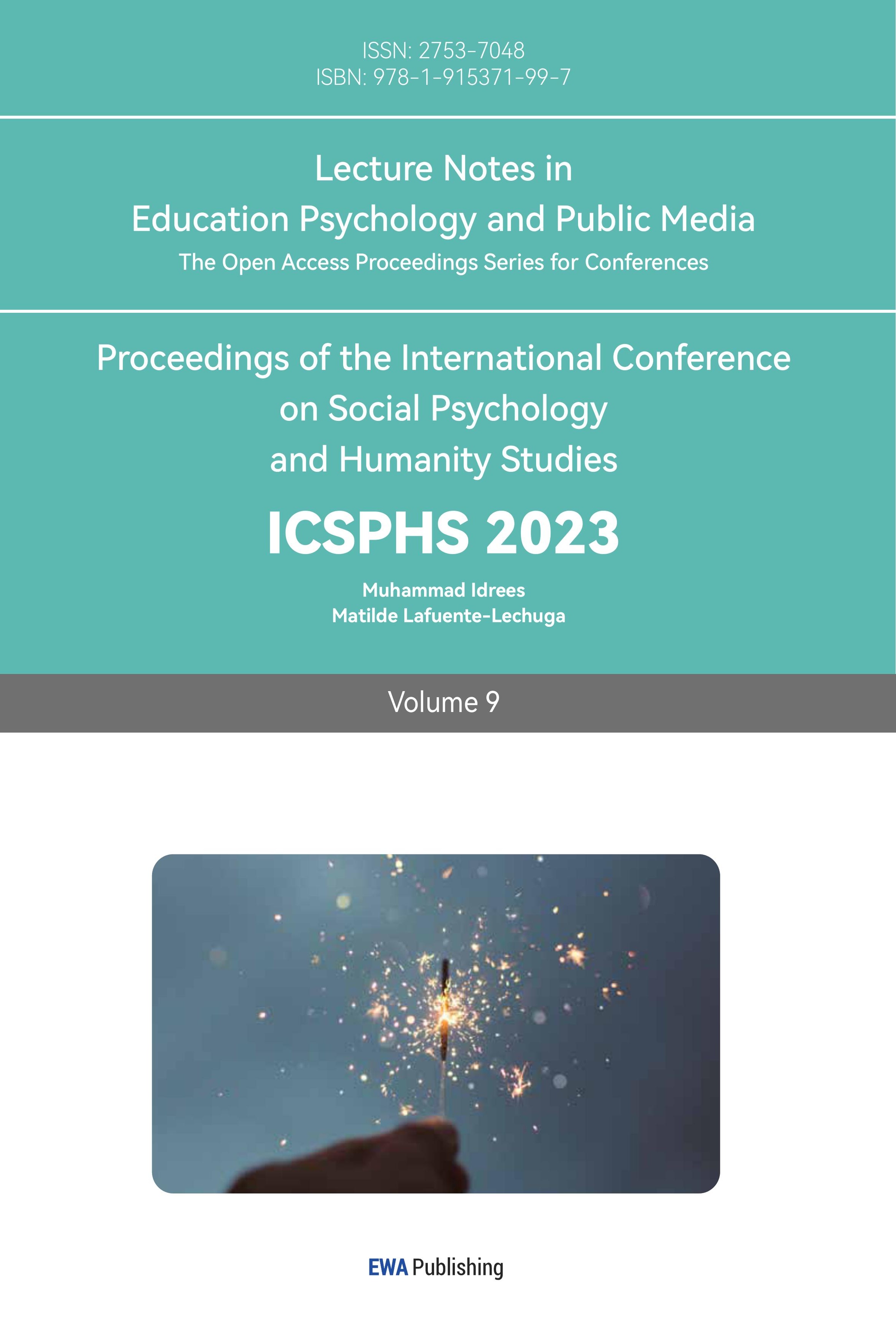1. Introduction
The emergence of social media platforms has fundamentally changed how companies communicate with their customers by enabling more specialized and focused marketing techniques. The use of algorithms is one of the most important breakthroughs in social media marketing. Algorithms are computing processes that examine data and produce predictions or recommendations. They are employed in social media marketing as a tool to gather and evaluate user data, which is then used to create targeted ad campaigns. Although algorithms have proven to be an effective tool for social media marketing, there are concerns about how they may affect society as a whole. Previous research has examined the impact of algorithms on consumer decision-making or how algorithms push relevant content based on user data. However, research on the impact of the use of algorithms in marketing communication on society is rare. This paper examines the potential impact of the application of algorithms in social media marketing on society. A qualitative research method has been used to investigate the topic by conducting a survey of relevant consumers. By analyzing the impact of algorithms on society, this paper aims to provide insights into how businesses can responsibly leverage this technology to maximize its benefits while minimizing its negative consequences. It will also help consumers recognise the potential impact of algorithms and use this technology wisely.
2. Literature Review
Algorithms, as a product of the information society, have today become a useful tool in various fields. In social media marketing, brands can use the properties of algorithms to conduct their marketing strategies more efficiently, so more scholars are researching this topic.
Much of the current literature on algorithms and social media marketing pays attention to the role of algorithms on social media platforms and their impacts on brands. Kietzmann et al. claim that brands must provide content that is interesting and pertinent to their audience if they want to gain more social media presence [1]. And Sashi also concludes that personalized material, such as photographs and videos, as well as the usage of hashtags and other social media tools, can improve social media engagement [2]. However, Mager maintains the negative impact of the use of algorithms in social media marketing on brands [3]. Algorithms have drawn criticism for upholding prejudice and discrimination as well as for forming "filter bubbles" that prevent exposure to a range of viewpoints.
Overall, previous studies have adequately analyzed the role of algorithms in social media marketing and their impact on brands. But there has been very limited discussion about the impact of the use of algorithms in social media marketing on society. As algorithms become more sophisticated and pervasive in social media marketing, there is a need to consider their impact on privacy, data protection, and social justice. Hence, this paper discusses the impact of the application of algorithms in social media marketing on society by using a combine of qualitative research method.
3. Methodology
This study employs qualitative analysis to investigate the impact of algorithms on society through social media marketing, focusing on active users in China. Qualitative research was selected due to its interpretative, specific, and subjective nature, allowing for an in-depth analysis of a particular group's perspective, such as that of active social media users [4]. Data was gathered through online surveys with individuals who use social media platforms at least twice a day, targeting a random sample of users in China. The decision to focus on social media users stems from the notion that when brands advertise on these platforms, they reach not only their target audience but also the general public, whose behavior can impact society. As a result, the users' experiences reflect the societal impact of algorithms in social media marketing.
To collect relevant data, a questionnaire was designed with questions pertaining to the most commonly used social media platforms, users' experiences with algorithmic posting, and a short answer question on the perceived impact of algorithms. Content analysis, rather than statistics, was employed as the primary method for data analysis, in line with Laetitia et al.'s recommendation for qualitative research [5]. The goal of the analysis was to identify patterns, themes, and concepts within the data, considering the age and gender of each respondent alongside their thoughts on algorithms' application in social media.
By combining the participants' multiple choice and short answer responses, the qualitative research method ensures that the data and analysis are reflective of their experiences and perspectives. However, this approach has limitations due to its subjective nature, necessitating further analysis and integration for a comprehensive understanding of the results. The survey aimed to draft highly relevant questions that concentrated on the topic, with the first step being the development of these questions. The survey was distributed to a total of 200 people, and approximately 67.5% (135) of the questionnaires were valid. Once the questionnaire was completed, the responses from 135 participants were analyzed to uncover insights into the social impact of algorithms in social media marketing.
In summary, this study combines qualitative analysis with content analysis to explore the influence of algorithms on society through social media marketing, specifically targeting active users in China. By conducting online surveys and analyzing the responses, the research aims to identify patterns and themes that shed light on how algorithms affect society. The qualitative research method, with its focus on interpretation and subjectivity, allows for a thorough examination of the participants' experiences and perspectives. However, this approach is not without limitations, as its subjective nature requires additional analysis and integration. Ultimately, the study aims to contribute to a better understanding of the social impact of algorithms in social media marketing and to inform future research in this area.
4. Analysis
4.1. Results
These questionnaires collected data from 135 participants, most of whom were young people between 15-25 years old, with a small number of users between 25 and 35 years old. The questionnaire had 7 multiple choice questions and one short answer question. The data was collected from a sample of 135 users, and 131 of them had experienced algorithmically pushed advertising content on social media, according to Figure 1.
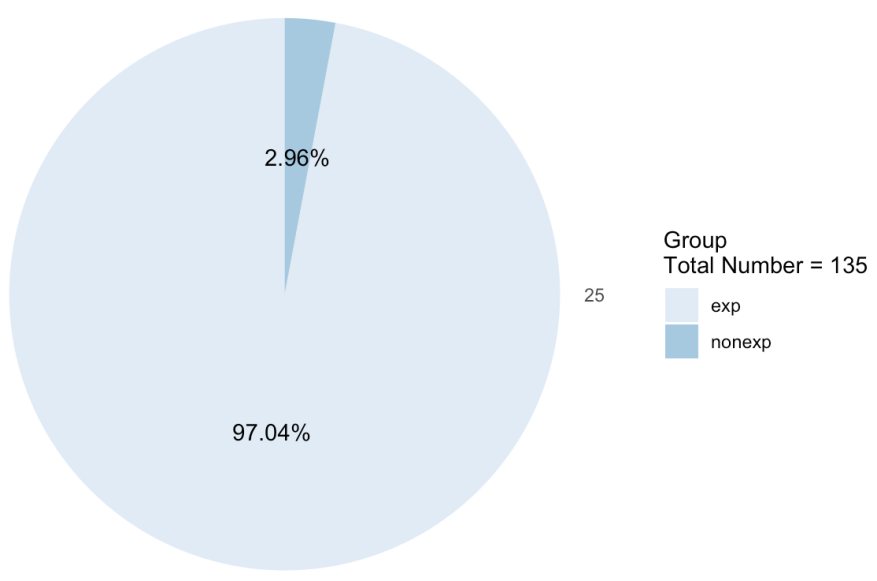
Figure 1: Percentages of people have experienced the algorithms advertisements on social media.
Out of the 131 users, 86 were interested in the pushed advertising content, but only 23 of them ended up consuming it through algorithmic marketing, which is shown in Figures 2 and 3.
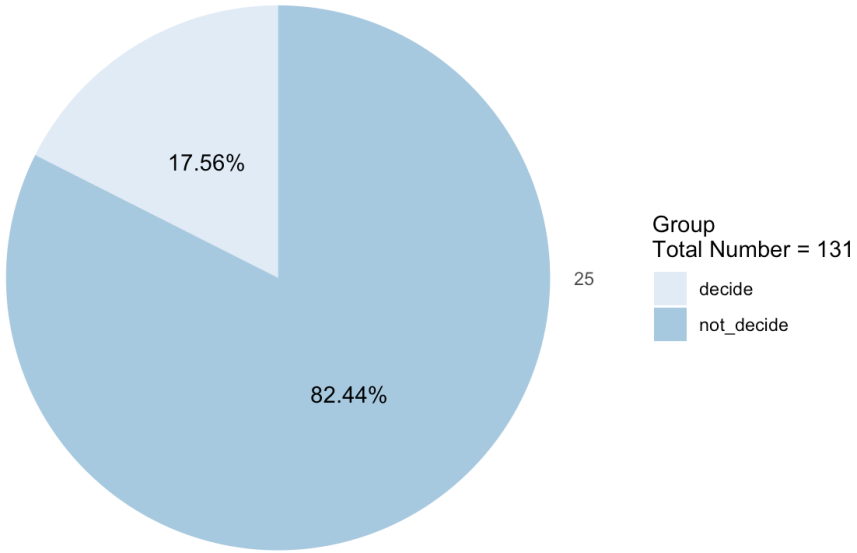
Figure 2: Percentages of people have made purchasing decisions through algorithms advertisements on social media.
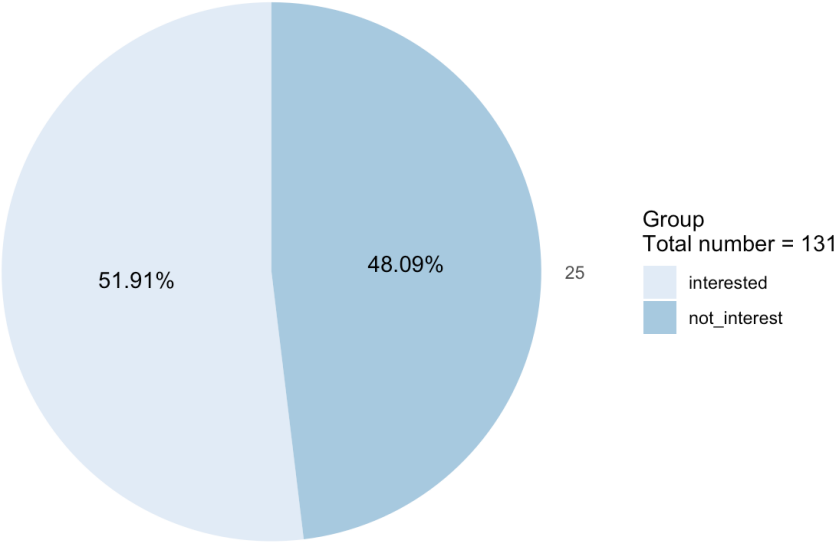
Figure 3: Percentages of people that think algorithms advertisements on social media are favorable.
The reason for this low consumption rate could be attributed to the fact that 90% of the users surveyed felt that algorithms in social media marketing had an impact on them. The users answered specific positive and negative questions through short answer questions, and their answers will be consolidated and analyzed in depth in the next section. This analysis would likely provide valuable insights into how algorithms in social media marketing influence users' behavior and decision-making processes. Overall, the paragraph provides an overview of the methodology and findings of the questionnaire, highlighting the impact of algorithmic marketing on users' behavior and attitudes towards it.
4.2. Impacts of Algorithms in Social Media Marketing
135 responses were collected through a questionnaire in which these users answered what they thought was the impact of the use of algorithms in social media marketing. As shown in Figure 4, the responses can be briefly divided into the following six points, which cover both positive and negative impacts.
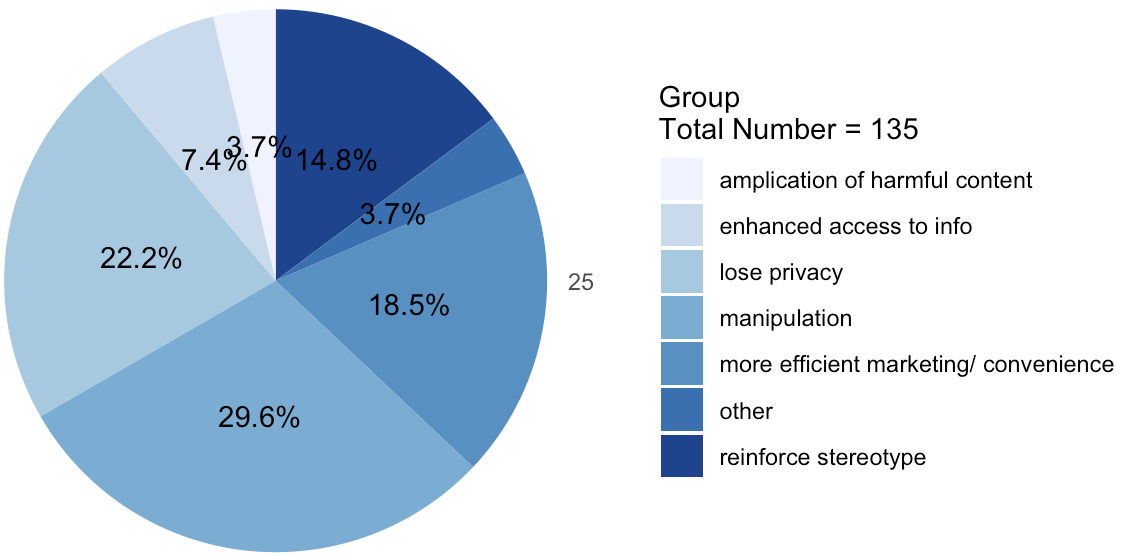
Figure 4: Respondents’ opinions of impact of algorithms in social media marketing.
4.2.1. Positive Impact
4.2.1.1. Efficient Marketing and Convenience
Firstly, 18.52% of the interviewees believe that marketing on social media can be made more efficient and accurate through the use of algorithms. Algorithms are an effective marketing tool for brands, helping them to target their marketing strategies according to their target consumers. Agung and Darma claim that online marketers can find potential clients according to the methodical evolution of algorithms on social media platforms, leading to more prospects for business growth [6]. According to Arrigo, social media is an effective instrument for assisting businesspeople in reaching a more suitable target market [7]. Algorithmic marketing also enables social media users to meet their needs faster. As social media has become a convenient and necessary way of communicating with friends and meeting social needs [8], people are more inclined to get their information on social media. For example, during festive seasons, algorithms will push out products on social media for the relevant festivals, and users can use algorithms as a tool to make their lives more convenient. Hence, algorithmic marketing has greatly increased consumer engagement in marketing campaigns and made marketing more efficient.
4.2.1.2. Enhanced Access to Information
Secondly, 7.4% of interviewees felt that algorithms can also improve information access and promote interpersonal interactions, enabling the sharing of ideas and the emergence of new communities. Brands use algorithms to learn about the interests of their users and integrate them into different online communities. Research by Sara et al. indicates that social media is utilized by brands to engage with their target audience, promote peer-to-peer conversations, and create communities where thoughts and ideals can be widely disseminated [9]. Algorithms have become a powerful tool for this marketing campaign. Users also benefit from joining online communities of interest to them and building social networks.
4.2.2. Negative Impact
4.2.2.1. Potential for Manipulation
More than 29.63% of users believe that the application of algorithms on social media is potentially manipulative, which is the highest proportion of all factors. By providing users with skewed information or recommendations, algorithms run the risk of influencing their behavior. The reason for this phenomenon is that algorithms recommend relevant content to users based on their browsing history. The right to push content is controlled by the social media platforms, so they can be manipulated to a large extent. The advent of algorithms has even made social media more manipulative. Ulrike has stated that big data volumes enable algorithms to assess and group users’ personal profiles considerably more quickly and precisely than they could before [10]. So brands use algorithms to collect data on consumers to build a better picture of their target audience. But for users, the spread uses of algorithms on social media can make them potentially manipulated.
4.2.2.2. Loss of Privacy
The second highest percentage of negative reasons was the loss of privacy, with 22.22% of social media users believing that the large number of algorithmic applications causes a loss of privacy. In order to personalize marketing messages, algorithms need access to customer data, which might raise issues with privacy and data security. Since they make it possible for businesses to gather and use personal information more effectively, algorithms have become particularly helpful to businesses [11]. To make the algorithm work more efficiently, brands need more personal information about potential consumers, whether they have permissions or not. It is realistic to suppose that actual realized harms—for instance, personal information being published to the internet for everyone to view after a leak—could spark resistance and raise issues, even though people may underestimate the likelihood of experiencing harm when employing algorithms [11]. So from the perspective of users, they will lose a lot of their personal data, including personal information and browsing history due to the use of algorithms on social media.
4.2.2.3. Reinforcement of Stereotype and Biases
Meanwhile, 14.81% of respondents believe that the use of algorithms in social media marketing reinforces stereotype and bias. As a result of biased data being used to train algorithms, prejudices and biases within society may be reinforced. Since algorithmic tools need to classify the collected user data in their operation, the content pushed out by the algorithm's operation largely reflects stereotypical influences, especially in terms of gender. Furthermore, it has been demonstrated that algorithms pick up on gender and integrate biases, reflecting unfavorable assumptions about women [12]. The stereotypical influences present in the algorithm can be largely offensive to social media users and can also create more prejudice in society.
4.2.2.4. Amplification of Harmful Content
Lastly, a smaller proportion of users (3.7%) believe that algorithms increase the amplification of harmful content, including hate speech or false information, with detrimental effects on society. A typical example of this point is clickbait, which is “a kind of internet content whose main purpose is to encourage users to follow a link to a web page, especially where that web page is considered to be of low quality or value.” [13] Although clickbait is considered harmful information because it undermines the credibility of the media and contributes to the spread of rumors and misinformation online [14]. However, it is still widely present on popular social media platforms. The reason for this is that companies see it as an increasingly lucrative tool. And algorithms have largely helped clickbait push harmful information to relevant users.
4.3. Solutions
In order to solve those negative impacts of the application of algorithms in social media marketing on society, social media platforms need to be more open about their algorithms and content selection processes. Users would therefore be better able to comprehend the algorithm's workings and why they are seeing particular material [11]. Also, this would make it possible for researchers to examine how algorithms affect social media and spot any potential biases or negative outcomes.
Secondly, social media networks should give accurate and superior material precedence over sensational or clickbait content. This could be achieved by putting fact-checking systems in place or by employing algorithms to find and flag damaging or misleading content. Also, users of social media networks should have more choice over the information they view and the feeds they receive. This might be accomplished by providing users with the option to personalize their feeds, block or muffle particular sources of content, or opt-out of ad targeting.
Finally, social media platforms should give diversity and inclusion a priority when developing their algorithms and approving content. This could be accomplished by checking algorithms for bias against particular groups and by using a more diverse staff to create and use algorithms.
Overall, social media platforms, users, researchers, and politicians will need to work together to mitigate the detrimental effects of algorithms in social media marketing. Building a more secure and fair social media ecosystem by putting an emphasis on transparency, accuracy, user control, diversity, and collaboration.
5. Conclusion
The analysis in this paper shows both positive and negative impacts of the application of algorithms in social media marketing on society. The problem has been investigated using a qualitative research method by surveying pertinent consumers. By inviting 135 social media users to complete a questionnaire, the following conclusions were drawn from this survey. Firstly, 90% of interviewees felt that the use of algorithms in social media marketing had an impact on them. They then answered separately the different reasons for the impact, and these answers were integrated and analyzed. Among the positive effects of algorithmic applications is that they can be used as an effective marketing tool, making marketing more efficient. It also makes it easier for potential consumers to receive precise information about the product and makes it more user-friendly. Nevertheless, more interviewees mentioned the negative effects of algorithmic applications. The highest percentage was that algorithms are potentially manipulative, followed by the fact that algorithms can largely cost users their privacy. Also, stereotypical influences and the reinforcement of bias can also occur. Finally, a minority of users believe that algorithms also enhance harmful content. Based on previous research, this study makes brands and consumers more aware of the pros and cons of this new technology and encourages them to continue to improve algorithms as an effective tool while avoiding the possible negative effects. However, there are some shortcomings in this article, such as the lack of comparison of the application of the algorithm on different types of social media platforms. And the relatively small sample size reduces objectivity. This study provides a comprehensive overview of the potential positive and negative impacts of algorithmic applications in social media marketing. Those findings provide possible suggestions for different people, such as brands who can improve their marketing strategies by avoiding these negative effects, and users who can avoid the negative effects of algorithms on them when browsing social media. And future research could focus on the different applications and impacts of the algorithm by region.
References
[1]. Kietzmann, J. H., Hermkens, K., McCarthy, I. P., & Silvestre, B. S. (2011). Social media? Get serious! Understanding the functional building blocks of social media. Business Horizons, 54(3), 241-251. DOI: https://doi.org/10.1016/j.bushor.2011.01.005.
[2]. Sashi, C.M. (2012), "Customer engagement, buyer‐seller relationships, and social media", Management Decision, 50(2), 253-272. DOI: https://doi.org/10.1108/00251741211203551.
[3]. Mager, A. (2018). Algorithmic ideology: How capitalist society shapes search engines. Information, Communication & Society, 21(1), 1-17. DOI: https://doi.org/10.1080/1369118X.2012.676056.
[4]. Gill, P., Stewart, K., Treasure, E. et al. (2008). Methods of data collection in qualitative research: interviews and focus groups. Br Dent J 204, 291–295. DOI: https://doi.org/10.1038/bdj.2008.192.
[5]. Ricci, L., Lanfranchi, J. B., Lemetayer, F., Rotonda, C., Guillemin, F., Coste, J., & Spitz, E. (2019). Qualitative methods used to generate questionnaire items: a systematic review. Qualitative health research, 29(1), 149-156.
[6]. Agung, N. F. A., & Darma, G. S. (2019). Opportunities and challenges of Instagram algorithm in improving competitive advantage. International Journal of Innovative Science and Research Technology, 4(1), 743-747.
[7]. E. Arrigo. (2018). “Social media marketing in luxury brands: A systematic literature review and implications for management research,” Manag. Res. Rev., 41(6), 657–679.
[8]. Jeong, & Coyle, E. (2014). What Are You Worrying About on Facebook and Twitter? An Empirical Investigation of Young Social Network Site Users’ Privacy Perceptions and Behaviors. Journal of Interactive Advertising., 14(2), 51–59. DOI: https://doi.org/10.1080/15252019.2014.930678.
[9]. Shawky, S., Kubacki, K., Dietrich, T., & Weaven, S. (2019). Using social media to create engagement: A social marketing review. Journal of Social Marketing.
[10]. Reisach, U. (2021). The responsibility of social media in times of societal and political manipulation. European Journal of Operational Research, 291(3), 906-917.
[11]. Fast, N. J., & Jago, A. S. (2020). Privacy matters… or does it? Algorithms, rationalization, and the erosion of concern for privacy. Current opinion in psychology, 31, 44-48.
[12]. Schroeder, J. E. (2021). Reinscribing gender: social media, algorithms, bias. Journal of Marketing Management, 37(3-4), 376-378.
[13]. Oxford English Dictionary, “clickbait, n.”, 2016. Retrieved 9 August, 2018, from http://www.oed.com/view/Entry/37263110.
[14]. Zhang, C., & Clough, P. D. (2020). Investigating Clickbait in Chinese social media: A study of wechat. Online Social Networks and Media, 19, 100095. DOI: https://doi.org/10.1016/j.osnem.2020.100095.
Cite this article
Wang,X. (2023). The Impact of the Application of Algorithms in Social Media Marketing on Society. Lecture Notes in Education Psychology and Public Media,9,424-431.
Data availability
The datasets used and/or analyzed during the current study will be available from the authors upon reasonable request.
Disclaimer/Publisher's Note
The statements, opinions and data contained in all publications are solely those of the individual author(s) and contributor(s) and not of EWA Publishing and/or the editor(s). EWA Publishing and/or the editor(s) disclaim responsibility for any injury to people or property resulting from any ideas, methods, instructions or products referred to in the content.
About volume
Volume title: Proceedings of the International Conference on Social Psychology and Humanity Studies
© 2024 by the author(s). Licensee EWA Publishing, Oxford, UK. This article is an open access article distributed under the terms and
conditions of the Creative Commons Attribution (CC BY) license. Authors who
publish this series agree to the following terms:
1. Authors retain copyright and grant the series right of first publication with the work simultaneously licensed under a Creative Commons
Attribution License that allows others to share the work with an acknowledgment of the work's authorship and initial publication in this
series.
2. Authors are able to enter into separate, additional contractual arrangements for the non-exclusive distribution of the series's published
version of the work (e.g., post it to an institutional repository or publish it in a book), with an acknowledgment of its initial
publication in this series.
3. Authors are permitted and encouraged to post their work online (e.g., in institutional repositories or on their website) prior to and
during the submission process, as it can lead to productive exchanges, as well as earlier and greater citation of published work (See
Open access policy for details).
References
[1]. Kietzmann, J. H., Hermkens, K., McCarthy, I. P., & Silvestre, B. S. (2011). Social media? Get serious! Understanding the functional building blocks of social media. Business Horizons, 54(3), 241-251. DOI: https://doi.org/10.1016/j.bushor.2011.01.005.
[2]. Sashi, C.M. (2012), "Customer engagement, buyer‐seller relationships, and social media", Management Decision, 50(2), 253-272. DOI: https://doi.org/10.1108/00251741211203551.
[3]. Mager, A. (2018). Algorithmic ideology: How capitalist society shapes search engines. Information, Communication & Society, 21(1), 1-17. DOI: https://doi.org/10.1080/1369118X.2012.676056.
[4]. Gill, P., Stewart, K., Treasure, E. et al. (2008). Methods of data collection in qualitative research: interviews and focus groups. Br Dent J 204, 291–295. DOI: https://doi.org/10.1038/bdj.2008.192.
[5]. Ricci, L., Lanfranchi, J. B., Lemetayer, F., Rotonda, C., Guillemin, F., Coste, J., & Spitz, E. (2019). Qualitative methods used to generate questionnaire items: a systematic review. Qualitative health research, 29(1), 149-156.
[6]. Agung, N. F. A., & Darma, G. S. (2019). Opportunities and challenges of Instagram algorithm in improving competitive advantage. International Journal of Innovative Science and Research Technology, 4(1), 743-747.
[7]. E. Arrigo. (2018). “Social media marketing in luxury brands: A systematic literature review and implications for management research,” Manag. Res. Rev., 41(6), 657–679.
[8]. Jeong, & Coyle, E. (2014). What Are You Worrying About on Facebook and Twitter? An Empirical Investigation of Young Social Network Site Users’ Privacy Perceptions and Behaviors. Journal of Interactive Advertising., 14(2), 51–59. DOI: https://doi.org/10.1080/15252019.2014.930678.
[9]. Shawky, S., Kubacki, K., Dietrich, T., & Weaven, S. (2019). Using social media to create engagement: A social marketing review. Journal of Social Marketing.
[10]. Reisach, U. (2021). The responsibility of social media in times of societal and political manipulation. European Journal of Operational Research, 291(3), 906-917.
[11]. Fast, N. J., & Jago, A. S. (2020). Privacy matters… or does it? Algorithms, rationalization, and the erosion of concern for privacy. Current opinion in psychology, 31, 44-48.
[12]. Schroeder, J. E. (2021). Reinscribing gender: social media, algorithms, bias. Journal of Marketing Management, 37(3-4), 376-378.
[13]. Oxford English Dictionary, “clickbait, n.”, 2016. Retrieved 9 August, 2018, from http://www.oed.com/view/Entry/37263110.
[14]. Zhang, C., & Clough, P. D. (2020). Investigating Clickbait in Chinese social media: A study of wechat. Online Social Networks and Media, 19, 100095. DOI: https://doi.org/10.1016/j.osnem.2020.100095.





